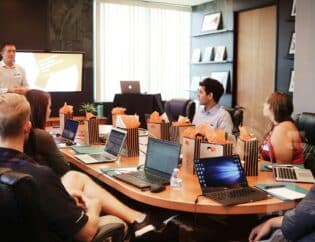Nowadays most jobs involve using a computer to perform at least some of the jobs’ responsibilities. The forms of computers have also branched out from just desktops to include laptops, tablets, smartphones, and more. The strength of computers has also increased dramatically over the years and the number of computer accessories have also increased, but there are 2 key staples for desktops and laptops from the beginning that are still around today: keyboards and mice. The nice thing about keyboards is that for most tasks there are actually multiple (potentially faster) ways to do the same task if the employee knows various keyboard shortcuts, some of which are described below.
CTRL + F is a shortcut so versatile it is hard to overstate it. When you use this shortcut, it will open up a search box and you can type word(s) into the search box to find exactly where the word(s) is in whatever bunch of text you are looking at. The nice thing is that CTRL + F has been around for so long that most programs have the functionality built-in: Microsoft Word documents, internet browsers, Excel, PDF documents, and more. Note that CTRL + F only works when the thing you are searching actually contains text and not pictures of text, because the shortcut cannot read images/pictures.
CTRL + A is another shortcut that has been around for a very long time and is built into most programs. When using it, all of the selectable area of an application will be selected. This is very helpful when selecting a large bunch of text that you want to then paste somewhere else and you can use CTRL + A instead of selecting every single line manually. CTRL + A also can work with images depending on the application you are selecting the image, and if you are pasting it, that part can vary too. For documents or forms where there are different fields for specific bits of information, CTRL + A can be used to select all of the information in a specifically highlighted field, instead of the whole document or form.
ALT + Tab is any employees best friend if they have to switch between windows very frequently, which is most employees. Using the shortcut makes whatever the previous window you had open/current your new open/current. This is also helpful when copying and pasting information from one window to another or comparing information from 2 windows. If a user keeps the ALT key held down and keeps pressing the Tab key, each press of the Tab key will choose a window that is farther back in the order of how recently it was the open/current window. When the user lets go of the ALT key, the selected window will become the open/current window.
CTRL + F is a shortcut so versatile it is hard to overstate it. When you use this shortcut, it will open up a search box and you can type word(s) into the search box to find exactly where the word(s) is in whatever bunch of text you are looking at. The nice thing is that CTRL + F has been around for so long that most programs have the functionality built-in: Microsoft Word documents, internet browsers, Excel, PDF documents, and more. Note that CTRL + F only works when the thing you are searching actually contains text and not pictures of text, because the shortcut cannot read images/pictures.
CTRL + A is another shortcut that has been around for a very long time and is built into most programs. When using it, all of the selectable area of an application will be selected. This is very helpful when selecting a large bunch of text that you want to then paste somewhere else and you can use CTRL + A instead of selecting every single line manually. CTRL + A also can work with images depending on the application you are selecting the image, and if you are pasting it, that part can vary too. For documents or forms where there are different fields for specific bits of information, CTRL + A can be used to select all of the information in a specifically highlighted field, instead of the whole document or form.
ALT + Tab is any employees best friend if they have to switch between windows very frequently, which is most employees. Using the shortcut makes whatever the previous window you had open/current your new open/current. This is also helpful when copying and pasting information from one window to another or comparing information from 2 windows. If a user keeps the ALT key held down and keeps pressing the Tab key, each press of the Tab key will choose a window that is farther back in the order of how recently it was the open/current window. When the user lets go of the ALT key, the selected window will become the open/current window.







